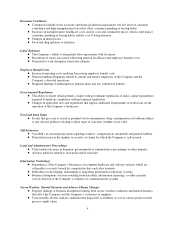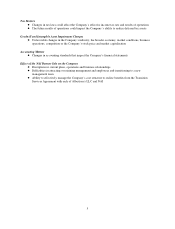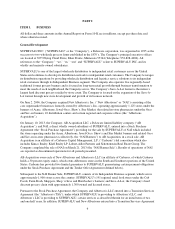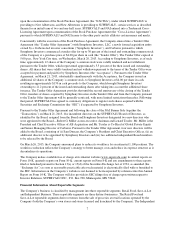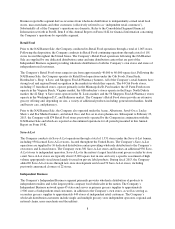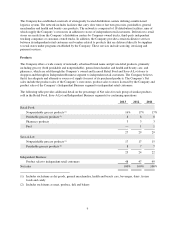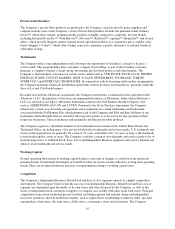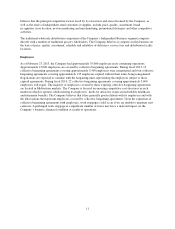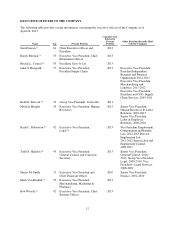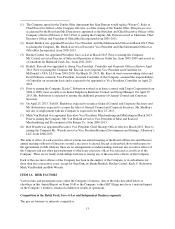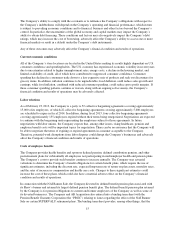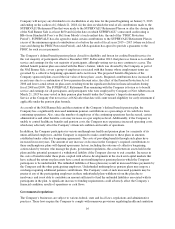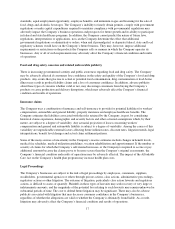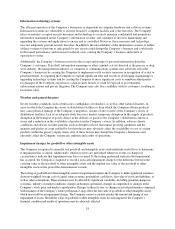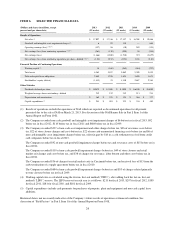Albertsons 2013 Annual Report Download - page 16
Download and view the complete annual report
Please find page 16 of the 2013 Albertsons annual report below. You can navigate through the pages in the report by either clicking on the pages listed below, or by using the keyword search tool below to find specific information within the annual report.The Company’s Retail Food and Save-A-Lot segments face competition for customers, employees, store sites
and products from traditional grocery retailers, including regional and national chains and independent food store
operators, and non-traditional retailers, such as supercenters, membership warehouse clubs, specialty
supermarkets, drug stores, discount stores, dollar stores, convenience stores and restaurants. The Company’s
ability to differentiate itself from its competitors and create an attractive value proposition for its customers is
dependent upon a combination of price, quality, assortment, brand perception, store location, in-store marketing
and merchandising and promotional strategies. The grocery industry is also characterized by relatively small
gross margins, and the nature and extent to which the Company’s competitors implement various pricing and
promotional activities in response to increasing competition and the Company’s response to these competitive
actions, can adversely affect profitability.
The Company’s Independent Business segment is primarily wholesale distribution, which competes with
traditional grocery wholesalers on the basis of price, quality, assortment, schedule and reliability of deliveries,
service fees and distribution facility locations. The profitability of the Independent Business segment is
dependent upon sufficient volume to support the Company’s operating infrastructure, and the loss of customers
to a competing wholesaler, closure or vertical integration may negatively impact the Company’s sales and gross
margin.
Execution of initiatives
Following the Company’s sale of New Albertsons, the Company is positioned as a leading food wholesaler, the
largest hard discount grocery chain by store count in the United States and a traditional food retailer with five
regional retail banners. The Company is focused on operating under a decentralized model with a lower overall
cost structure. By doing so, the Company expects to have the ability to lower pricing, as appropriate, across its
three business segments. In addition, the Company will continue to focus on retailing and affiliating new
accounts within its Independent Business segment, as well as expanding its Save-A-Lot format through both
corporate and licensed locations. If the Company is unable to execute on these initiatives, the Company’s
financial condition and results of operations may be adversely affected.
Substantial indebtedness
The Company has, and expects to continue to have, a substantial amount of debt. The Company’s substantial
indebtedness may increase the Company’s borrowing costs and decrease the Company’s business flexibility,
making it more vulnerable to adverse economic conditions. For example, high levels of debt could:
• require the Company to use a substantial portion of its cash flow from operations for the payment of
principal and interest on its indebtedness, thereby reducing the availability of cash flow to fund
working capital, capital expenditures, acquisitions, and other purposes;
• limit the Company’s ability to obtain, or increase the cost at which the Company is able to obtain
financing in order to refinance existing indebtedness and fund working capital, capital expenditures,
acquisitions and other purposes; and
• limit the Company’s ability to adjust to changing business and market conditions placing the Company
at a competitive disadvantage relative to its competitors that have less debt.
Pursuant to the Company’s debt agreements, the Company has created a security interest in substantially all of its
assets to secure its debt. Because of these security interests, the Company has agreed to certain limitations on its
ability to dispose of assets or is otherwise required to use a portion of the proceeds of such dispositions to pay
down its debt. There are also various restrictive covenants and cross-default covenants in the Company’s debt
instruments. If the Company fails to comply with any of these requirements, the related indebtedness (and other
unrelated indebtedness) could become due and payable prior to its stated maturity and the Company may not be
able to repay the indebtedness that becomes due. A default under the Company’s debt instruments may also
significantly affect the Company’s ability to obtain additional or alternative financing.
14


